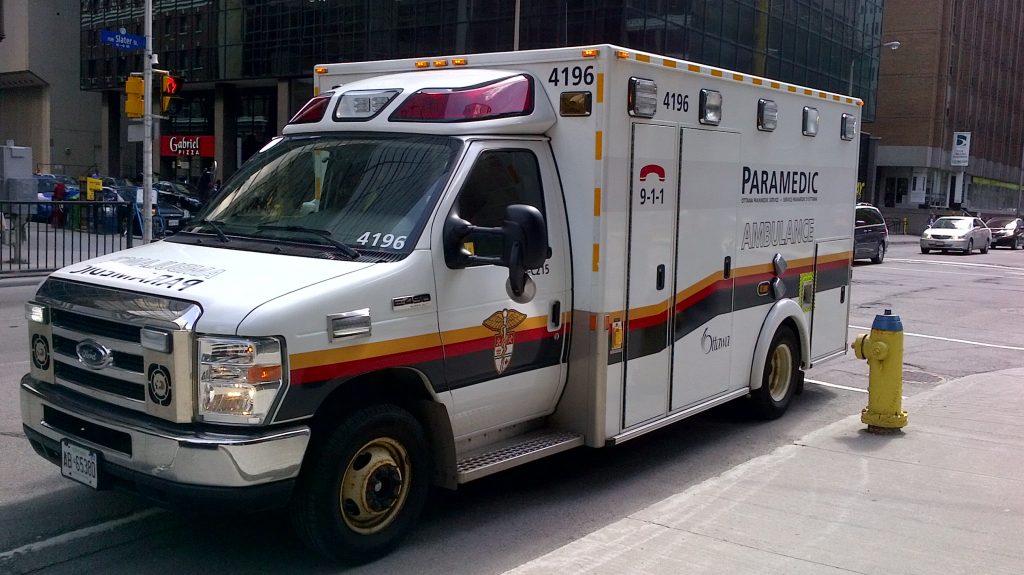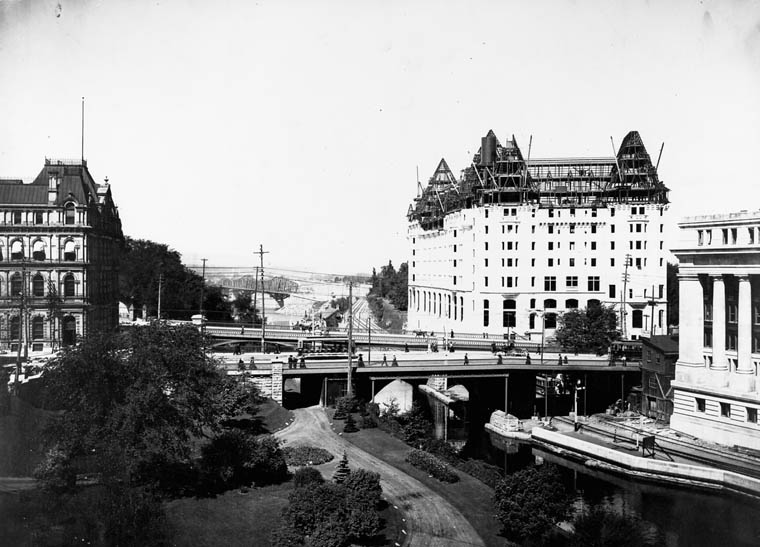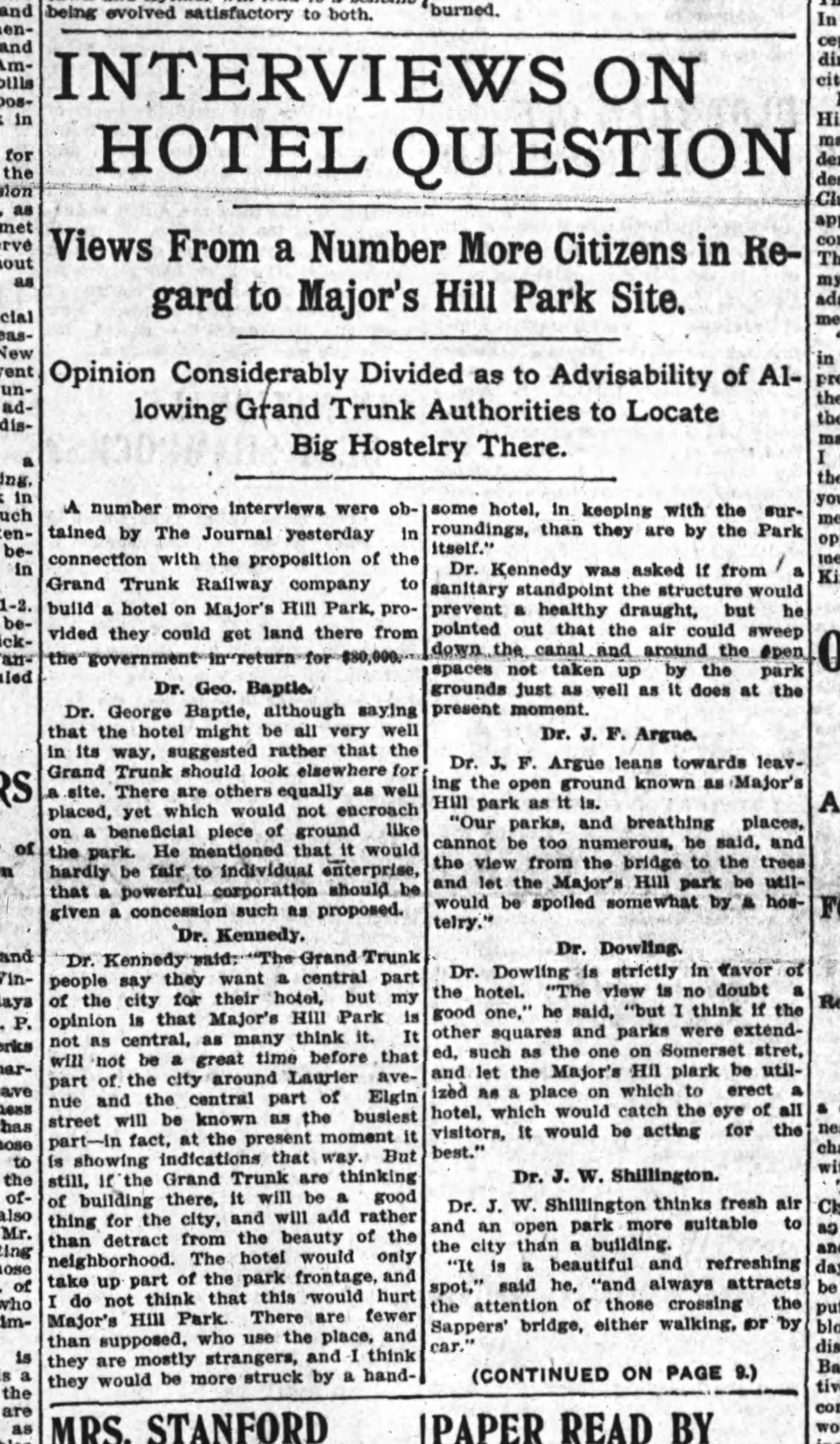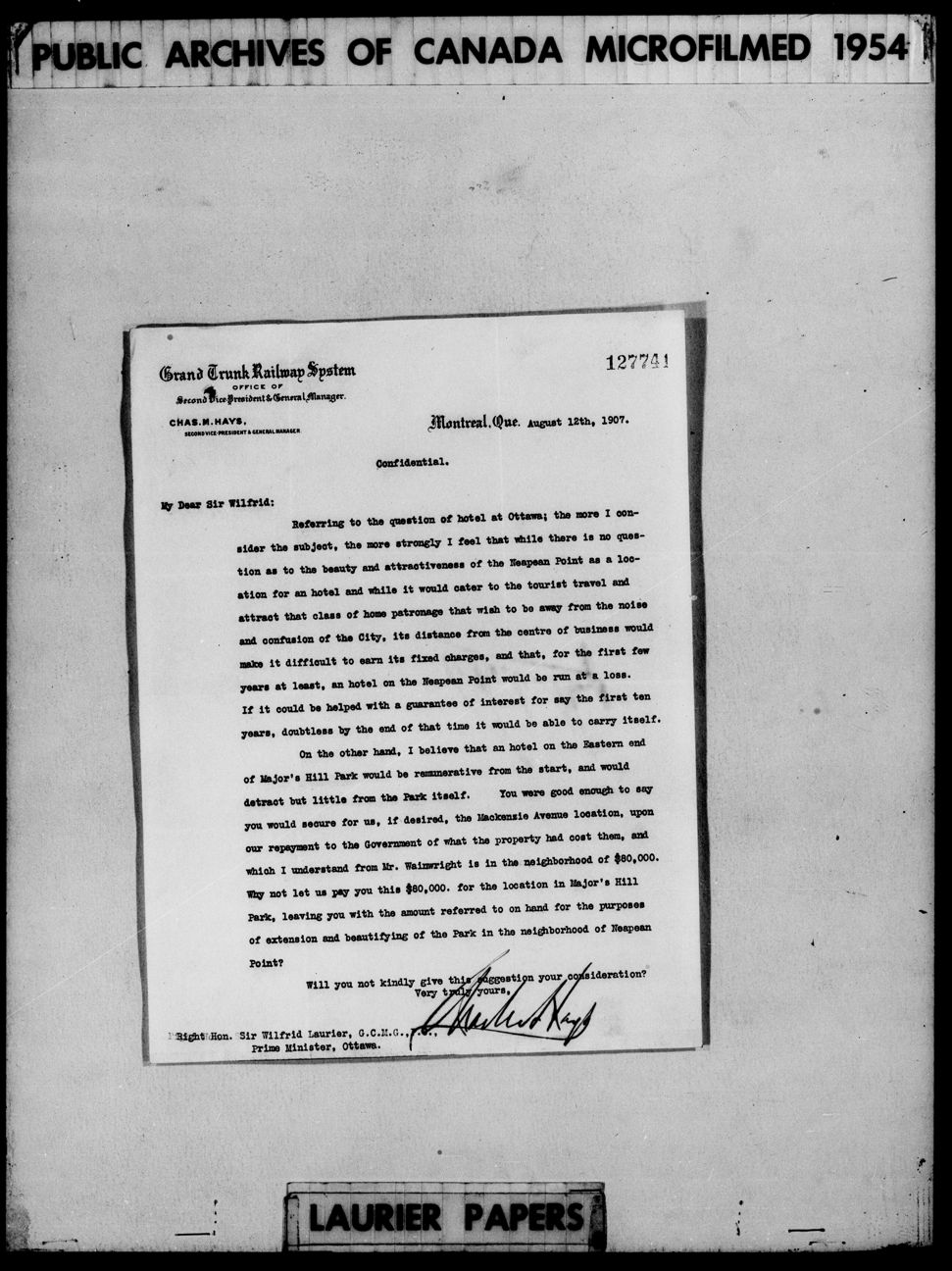Category Archives: Assignment 2
Test
Test
Test
Uncertain fate of health networks have healthcare providers worried about funding

In the lead up to the new provincial budget, all eyes are on the future of healthcare spending and where cuts will be made. According to an analysis of the Ontario government’s spending from 2014 to 2018, funding for acquired brain injury to the Champlain Local Health Integration Network increased by roughly seven percent over that time. However, due to recent developments related to the budget, health care providers are worried about their future funding.
On January 31, the NDP leaked a draft Conservative health care plan. In it, the administration lays out a plan to create a “super health agency,” confirming the province’s plans to disband the 14 Local Health Integration Networks (LHIN) in Ontario, including the Champlain LHIN, which manages services in Ottawa. Health Minister Christine Elliott later released a statement confirming the document is genuine, but emphasized that it is a draft and reaffirmed the Ford government’s commitment to health care.
The 2018 Ontario Public Accounts reports the Champlain LHIN, received roughly 2.7 million dollars for ABI that year, which is less than five percent of all provincial funding given to ABI. Judy Gargaro, Executive Director of the Ontario Neurotrauma Foundation, a non-profit brain injury prevention organization, says this shows that funding should be increased, not slashed.
“It’s an expensive group to do right and if you do it wrong, there’s all sorts of other costs that come to society,” she says. “It’s easy for governments to look at other chronic conditions or diseases, like cancer, that have more perceived impact to the public, and part of our frustration is that people don’t realize ABI is a huge number.”
According to a 2016 report by the Champlain LHIN, Ontario records roughly 18000 new cases of acquired brain injury (ABI) each year, with 6500 new cases in Champlain alone, which is home to roughly 10 percent of Ontario’s population. ABIs, which can be either traumatic (stemming from an acute injury to the head) or non-traumatic (such as from a stroke), is a leading cause of death and disability to people under the age of 45.
The Ford administration ran on a platform promising to help Ontario save money by cutting down on government spending. France Gélinas, the NDP Opposition Health Care Critic, says the current government ran on a platform to save $6 billion in the province, adding it will ‘absolutely’ mean cuts to health and long-term care spending.
“Health care represents half of the expenses of the provincial government, so half of six billion dollars is three billion dollars,” says Gélinas, the New Democrat MPP for Nickel Belt. “They have said, and they are on the path, to cut three billion dollars out of health care and any reason, any words that they use will not change the end result.”
With the future of the LHINs in doubt, care providers are concerned they won’t be able to provide adequate levels of support service. Gargaro says she believes the government doesn’t truly understand the ramifications of not funding care for afflictions like acquired brain injury properly, and that the government needs to establish a properly funded “brain injury strategy.”
“If you look at community providers and their waitlists, you have 10-year waitlists for housing, 10-year waitlists for supportive service. Even if it’s a one-year wait list, for someone who’s struggling with the aftereffects of a brain injury, one year is a lifetime,” she says. “It’s not just Champlain’s problem, this is a provincial problem.”
The government is holding budget consultations until February 8.
Ford government pledges to reduce student grants

The Ontario government has announced they will reverse a decision by the previous government that provided an increase in grants to mainly low-income students.
The conversion of loans into non-repayable grants by the previous Liberal government was intended to make post-secondary education more affordable for low and middle-income students.
Natalia Valencia is a student at Carleton University. She is thinking of doing a law degree in the future but does not think she will be able to if changes to the grant program occur.
“Our placements (as social work students) are generally unpaid and we pay full-time tuition so I’m genuinely concerned about what’s going to happen when I graduate,” Valencia said.
By converting student loans into grants, the Ontario government lost over $450 million in revenue in 2017-2018. Doug Ford’s Progressive Conservatives will require repayment of these funds for future students.
According to the Ontario government in 2016, students were struggling to pay back loans after graduation, with nearly half of graduates not paying them in time. With this, the Liberal government began their grant program with over $1.6 billion in funding, with over three quarters going to low-income students.
These grants replaced loans provided, which were significantly reduced to under a quarter of the province’s student financial aid.
The Ontario Auditor General’s report on education warned of rising debt from the increased grants, with costs possibly hitting $2 billion by 2020-2021. The report stated there is not enough evidence of increasing student enrollment, with it only increasing by one percent in universities for the initial year of the grant program. This coincides with the Ontario’s Financial Accountability Office predicting in December that the Ontario budget’s deficit will triple to $12.8 billion.
According to Jean-Paul Lam, economics professor at the University of Waterloo and former economist at the Bank of Canada, perception plays a role in crafting this policy.
“For any government it’s a question of priority and a question of choice,” Lam said.
The Liberal government, according to Lam, were willing to go further into deficit to convert student loans into grants. They did so because they wanted to invest in long-term growth to solve some of the low productivity issues in Canada.
But with the Conservative government’s announced intentions to revert back to loans, the Liberals grant program’s effectiveness will be unknown.
“To test whether policy is effective you need to have at least a couple years of data to see if there is a change or not. One year is not enough,” Lam said.
There are those supportive of the Conservative government’s intention, such as Christine Van Geyn, Ontario Director of the Canadian Taxpayers Foundation.
“I don’t think there’s a good fairness argument that students from high-income families should be eligible for grants,” Van Geyn said, as she claimed that students with household incomes up to $175,000 were also eligible.
According to Van Geyn, post-secondary school requires financial commitment.
“There’s a greater expectation that students who are going to university have some obligation to pay for their education in the form of a low interest repayable loan.”
For Ian McRae, the Government Relations and Policy Coordinator for the Canadian Federation of Students, these grants are more than financial. He said the Auditor General’s report did not take quality of life into account.
“How many students were able to drop down to part-time work who were previously working full-time or multiple jobs?” McRae said.
According to him, having grants means less time for students trying to earn extra income and more time focused on studies and mental health.
Provincial task force calls for improved health technology despite annual cutbacks

A group of medical experts appointed by the Ontario government is calling for improving health technology — or eHealth — as part of their strategy to address overcrowding in hospitals.
The call came this month in the first of a series of reports from the Premier’s Council on Improving Healthcare and Ending Hallway Medicine. The group was assembled by Premier Doug Ford to propose solutions to “hallway healthcare,” a term used to describe the current lack of space in the healthcare system.
At the same time, provincial eHealth spending has decreased by 8% over the past four years, according to analysis of the government of Ontario’s spending records. This includes a reduction of more than 60% in capital spending, which represents the purchase of new hardware and eHealth equipment.
In the same period, the Ontario provincial government’s overall healthcare spending has grown at a rate of more than 9%.
Carlington Community Health Centre in Ottawa has seen the value of eHealth technology but has had to reduce usage as it became more expensive.
“It was the link that allowed us to have conference video with other providers,” said Executive Director Cam MacLeod. “The cost went up, and we had to make choices. So now we use very little of it.”
eHealth is a broad term for technology used for healthcare. It includes telemedicine — video chat for seeing your doctor — and Electronic Health Records, a digital record of a patient’s contact with the healthcare system that tracks important measurements like blood pressure and x-ray results.
OntarioMD, owned by the biggest organization representing doctors in Ontario, receives funding from the provincial government to implement eHealth technology and train care providers in its use. Today, it brings in 60% less annual revenue than it did in 2015.
According to OntarioMD’s CEO Sarah Hutchison, this is partly because they receive less and less money each year from a fund set up by the Ontario Medical Association to support doctors upgrading their technology. The money they receive from the provincial government has held steady.
“We’re serving more folks and doing more work,” said Hutchison. “But our funding envelop is not increasing.”
Hutchison’s company has been involved in eHealth for over 15 years. She said funding from the provincial government allows them to better link patients to their doctors or nurses, improving efficiency and unclogging the healthcare system.
She said the real problem with eHealth funding has more to do with how it’s handed out. Both the federal government and the regional bodies that allocate funds — called Local Health Integration Networks — are also trying to distribute their own eHealth funding.
“I think we need to work in a very aligned way,” Hutchison said. According to her, streamlining the system is an important step towards improving support for eHealth.
Politicians have echoed this sentiment, describing eHealth as being important, but also as being a “boondoggle.”
eHealth Ontario is the provincial organization tasked with provincial eHealth development. In 2009, the group was embroiled in controversy after a special report by the Auditor General found that the organization overpaid for favoured companies to be consultants on projects, resulting in high program costs.
eHealth Ontario did not return requests for a phone interview.
Just seven years after their initial report, the Ontario Auditor General released a follow-up news release indicating that although over $1 billion had been budgeted for eHealth initiatives by eHealth Ontario, only 80% of projects had been completed.
Canada Health Infoway is an organization that receives federal money and aims to improve access to healthcare across Canada through investments in new eHealth projects. They have also seen a 20% reduction in their revenues since 2015, according to analysis of their annual reports. A small amount of that money also goes to OntarioMD.

Area around Bronson and Sunnyside Avenue saw a spike in parking tickets issued from 2015 to 2017: A student’s risk for free parking
The number of tickets issued for parking exceeding three hours at the area across Carleton University’s main entrance has increased nearly 70 per cent from 2015 to 2017, according to an analysis on Ottawa’s parking-ticket violation data obtained through a municipal freedom-of-information request. The city collected $15,125.50 from fines in the area around Bronson and Sunnyside Avenue.
Parking exceeding three hours means parking beyond the time limit on a street with no posted signs between 7 a.m. and 7 p.m. during weekdays, according to the City of Ottawa’s traffic and parking by-law.
Ian Miller, the City of Ottawa’s communication officer, said an email, although there has been an increase in tickets issued, the city is unable to say why.
Kevin Simas, a Carleton University student, is one of many who parks along this street for more than three hours.
He said he had always parked there and had never received a parking ticket until three weeks ago.
“Getting the parking ticket made me feel horrible,” Simas said. “I’ve gotten $20 tickets before for parking past midnight or whatever the regulations were, but $50 for exceeding one hour on a residential street in Ottawa is too much.”

Tania McCumber, the city’s Parking Enforcement and the Licensing Compliance Unit program manager, said in an email, that parking tickets are meant to deter residents from violating the traffic and parking by-law. The prices for violation fines go through an application process, which will be approved by the Regional Chief Justice.
“Fines for parking violations are based on the severity of the violation. For example, a fine for parking in excess of the posted time limits ($60) is lower than the fine for stopping in a no stopping zone ($120), as the latter violation may pose an issue of public safety,” she said.
Simas said he parked in that area because he didn’t want to pay for parking at Carleton University.
“I didn’t want to spend money to park because I come to campus every day,” he said. “I just don’t want to pay four or five dollars an hour or however high the rates are.”
He said parking fees on campus should be around one or two dollars.
Parking rates at Carleton University range from $3.50 an hour with a maximum of $14 for four hours, according to the university’s website.
The city currently doesn’t have any garages or parking lots in the immediate vicinity of any post-secondary institutions, including Carleton University.
Scott Caldwell, the City’s area manager of transitway and parking, said in an email, there are conditions to designing parking spaces based on local conditions, environmental standards and the general layout of the facility.
Simas said he will continue to park off-campus unless he’s running late to class.
Controversial Château Laurier addition conjures heat similar to debates long past

While recent Twitter comments condemned the re-designs for the Château Laurier addition as “the same ugly glass structure” that “birds might enjoy pooping on,” they also echo criticisms from the hotel’s distant past.
In fact, designs for the beloved Château itself were once seen as a “blot on our government,” and an “indignity” to Major’s Hill Park’s public space, as esteemed merchant Mr. Poulin told the Ottawa Journal from August, 1907.
Public lands for private enterprise
Similar statements from ‘leading citizens’ were collected by the Journal – Ottawa’s 20th century Twitter – after the Grand Trunk Railway company revealed their designs for the expensive hotel and train station, and left a citizenry divided.

The hotel would be built at the front of Major’s Hill Park, a public space many Ottawans valued for its heritage and scenic view of the Parliament buildings. Here, the developers felt it would have unfettered access to tourists using the adjacent railroad.
An unhappy Mr Ross, of the C. Ross department store, told the Journal it would “utterly destroy one of the finest pieces of natural scenery that Ottawa has.”
J.R. Jackson, in a dramatic letter to the next day’s issue, wrote that “every man, woman and child [. . .] would say let the Grand Trunk and its hotel (and station, too, for that matter) get out of Ottawa bag and baggage, rather than surrender the choicest public grounds [. . .] to be a private promenade…”
Not all Ottawans opposed the site, however. A Dr. Kennedy expressed that most park-goers weren’t actually from the city, and “would be more struck by a handsome hotel [. . .] than they are by the Park itself.”
The Château’s architect, a New Yorker named Bradford Lee Gilbert, mirrored these claims in an urgent letter to Grand Trunk’s general manager, Charles Hays, that month. “Judging from the number of benches provided, [the park] is not used to very great extent by the citizens of Ottawa,” he wrote.
Gilbert’s letter, obtained from the Library and Archives, argued the Château’s gothic structure would “harmonize” with the Parliament buildings, and wouldn’t pose any threats to the park’s usage.
Public lands for government-gain
But the designs would have to win the federal government over before construction could begin. An archival letter to Prime Minister Wilfrid Laurier reveals the government wasn’t keen to have the hotel in a space that could be used for new government buildings instead. After Laurier suggested that Napean Point be a more suitable location, Hays argued otherwise.
“Its distance from the centre of business would make it difficult to earn its fixed charges. [. . .]For the first few years at least, an hotel on the Napean Point would be run as a loss,” he wrote to Laurier.

Laurier then contacted the Grand Trunk’s Vice-President William Wainwright three days later, claiming the hotel’s height would compete too much with Parliament. “You should ask your architect if it would not be possible to take off one or two storeys,” he suggested.
Architectural Upheaval
Architect Bradford Gilbert’s miserable fate heightened the controversies. His designs for the hotel and station to cost a combined $2.5 million were approved by the government, but six days before City council examined them, Gilbert received a distressing order from Hays to re-design the building to cost $1 million less.

Gilbert refused to take responsibility for the re-designs the City didn’t approve of, and was fired in February, 1908. The new firm Ross & MacFarlane soon unveiled designs that an angry editorial in the Architectural Record claimed were “identical” to Gilbert’s.
“If this be ‘architecture,’ a supply of tracing paper and a brazen front are the main requisites for [. . .] that noble art,” it haughtily states.
The hotel became controversial again when designers proposed its first expansion, in 1929.
Château historian Kevin Holland said in an email that throughout history, any changes to the hotel “reflect the respective owners’ confidence in their property and its market,” and “any controversy reflects the passionate and protective views held by Ottawans for what has long been an iconic landmark in the capital.”
And if history repeats itself, today’s new ‘disdain’ might just become tomorrow’s old icon.

